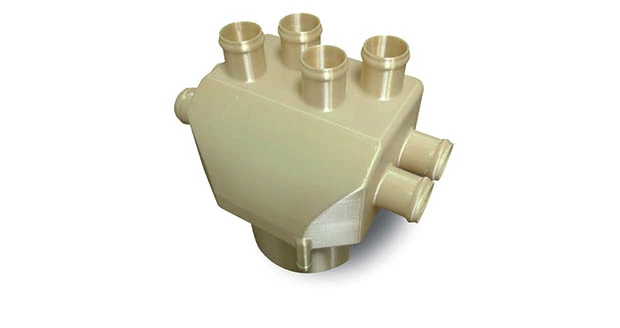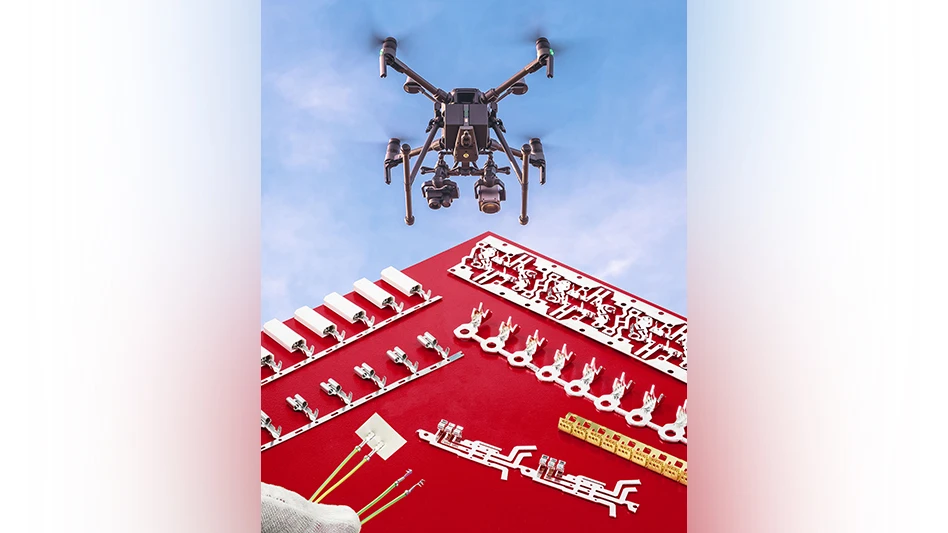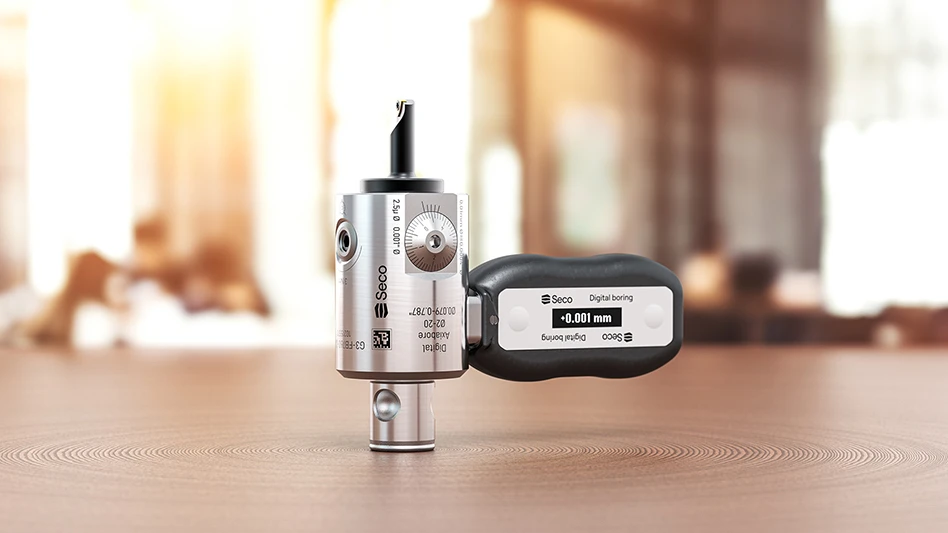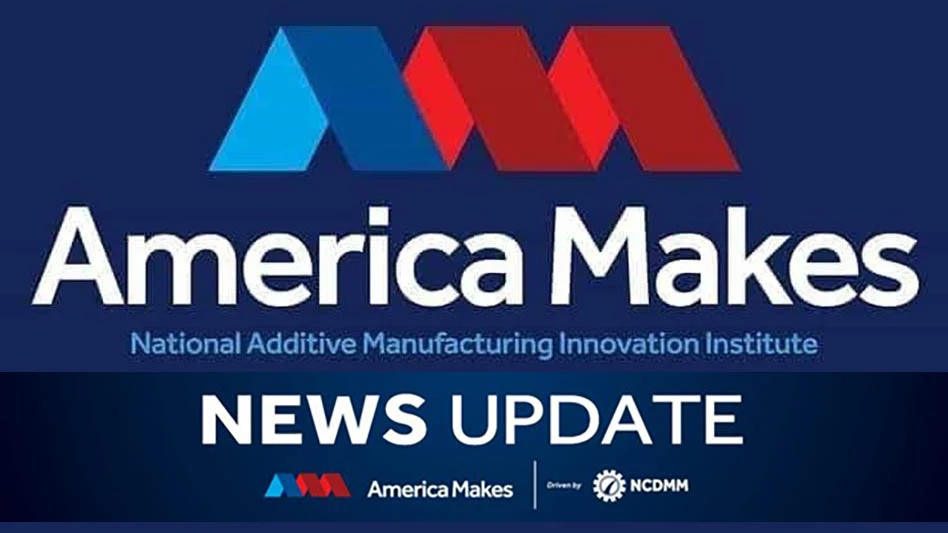
.jpg) Lightweighting, maintaining compliance in an ever-changing regulatory environment, and finding manufacturing and cost efficiencies are the biggest challenges faced by aerospace designers. Parts and systems that address these challenges demand a deep understanding of material capabilities and the processing methods that are best suited to each part or system. The following case studies illustrate the ways in which the right materials, married with the right application and manufacturing processes, can help achieve those critical objectives.
Lightweighting, maintaining compliance in an ever-changing regulatory environment, and finding manufacturing and cost efficiencies are the biggest challenges faced by aerospace designers. Parts and systems that address these challenges demand a deep understanding of material capabilities and the processing methods that are best suited to each part or system. The following case studies illustrate the ways in which the right materials, married with the right application and manufacturing processes, can help achieve those critical objectives.
Case I - Improving design, manufacturing
When Taylor-Deal Aviation LLC in Dallas, needed a way to produce small volume parts quickly and cost-effectively, it turned to SABIC’s Innovative Plastics business and Stratasys Inc. SABIC, Pittsfield, Mass., offered strong, lightweight, flame-retardant ULTEM 9085 resin, a polyetherimide (PEI) material. That resin, coupled with fused deposition modeling (FDM) technology from Minneapolis-based Stratasys, enabled Taylor-Deal Aviation to create specialty fluid- and air-handling parts in hours rather than weeks. Additionally, the material met the latest industry regulations for flame-smoke-toxicity.
Leveraging the benefits
The properties of ULTEM 9085 resin are suited to the aerospace industry and to FDM processing. Stratasys’ FDM additive manufacturing process creates three-dimensional parts, layer-by-layer, directly from CAD files for use in design verification, prototyping and development. Geometric limitations in custom aircraft designs can make traditional manufacturing methods ineffective. Stratasys’ FDM technology solved two key challenges – greater part complexity and consolidation of numerous parts. In addition, the process avoided costly tooling for fiberglass parts and machining costs for metallic parts, which are often too expensive for low production runs.
Combining the ULTEM resin with a nimble processing method helped Taylor-Deal Aviation create novel designs and rapidly supply customers with lightweight components that improve fuel efficiency.
Compatibility with regulations
Unlike polyetheretherketone (PEEK), ULTEM 9085 resin is flame retardant without additives and compliant with Federal Aviation Agency (FAA) FAR 25.853 and Ohio State University (OSU) 55/55. The resin also provides a high strength-to-weight ratio, elevated thermal resistance, high strength and stiffness, and broad chemical resistance.
FDM technology using ULTEM resin is suitable for manufacturing components with complex geometries – such as parts and ductwork to handle air or fluids in hidden spaces – offering a solution for the aerospace, mass transportation, automotive, and healthcare industries where it is vital to remove manufacturing costs, eliminate weight, improve design freedom, or meet safety standards.

Case II - Fire blocker technology
National Nonwovens, a composite solutions developer for the aerospace industry in Easthampton, Mass., produces lightweight materials found in thermal, acoustic, and vibration-dampening insulation blankets and fire-retardant products for seating structures. The company created the aerospace industry’s first fire blocker for all aircraft seat covers. National Nonwovens developed the technology by upgrading from aramid to high-performance fiber made from SABIC’s flame-retardant ULTEM resin, which can be used with leather, synthetic leather, and woven fabrics.
Using ULTEM resin increased the limited oxygen index (LOI) of Ultra-ProTechtor fire blocker and lowered heat release for increased safety. ULTEM resin’s low specific gravity and reduced moisture absorption support lighter solutions, thereby reducing fuel consumption. SABIC’s material also improved the durability and softness of Ultra-ProTechtor fire blockers.
 Meeting regulatory requirements
Meeting regulatory requirements
By moving to ULTEM fibers, National Nonwovens created a fire blocker technology that meets virtually all OEM seating specifications. In its fiber form, ULTEM resin also meets the requirements of FAA FAR 25.853 regulations by avoiding additives or fillers that can give off volatile organic compounds (VOCs).
Case III - Lighter in-flight trolleys
LSG Sky Chefs, Irving, Texas, is the world’s largest provider of in-flight food services. Norduyn, headquartered in Montréal, Canada, designs and manufactures galley and cabin products for commercial aviation. Together, the companies sought to create a new line of ultra-light, in-flight trolleys that could reduce fuel consumption and emissions. The results were the Crystal Cabin full- and half-service trolleys – jointly designed by LSG Sky Chefs and Norduyn – which use SABIC’s NORYL resin in the frame and critical components and ULTEM resin for the extrusion profiles and door latch.
Efficient, lightweight design
Compared to trolleys made with metal components, SABIC’s high performance materials reduced trolley weight up to 40%: 16kg (37.5 lb) for a full-size trolley and 9.9kg (23.1 lb) for a half-size trolley. The weight reduction came from NORYL resin’s low specific gravity of 1.1 – one of the lowest available for thermoplastics used in the aircraft industry.
Weight reduction can add up to significant savings in fuel costs. A Boeing 747 fully loaded with these trolleys could cut weight by approximately 750kg (1,650 lb), saving an airline approximately $65,000 per year in fuel.
Norduyn and LSG Sky Chefs chose ULTEM resin for external components, including profiles that support the frame, for resistance to UV light and ability to be custom-colored, allowing them to offer trolleys in airlines’ brand colors. ULTEM resin also provides impact and chemical resistance to withstand frequent bumps and bangs and daily cleaning. To test the performance and durability of these trolleys over time, SABIC provided services to this project from its Global Application Technology organization, including chemical performance testing to simulate 10 years of washing cycles, food staining, UV stability testing, and custom color matching.
Through advanced materials and re-engineering, LSG Sky Chefs and Norduyn turned the design of standard trolleys on its head, resulting in lighter, better-insulated trolleys with longer lives. In addition to light weight and durability, the trolleys have fewer moving parts, resulting in less maintenance and fewer parts to stock and manage. The use of SABIC’s ULTEM and NORYL resins enabled both companies to bring their design to life, achieve the desired reduction in weight, meet flame-smoke-toxicity compliance, and provide brand-specific colorability, resistance to cleaning cycles, and part integration.
Because they can be extruded or injection molded, ULTEM and NORYL resins provide new options for an array of interior applications such as rub strips, seat track covers, switch panels, cable guides, conduits, wall/ceiling mounted electronics, and parts machined from slab stock.
Industry challenges
As regulations become more stringent and technologies improve, the aerospace manufacturing industry is seeing a desire by customers to comply with or exceed regulations whenever possible, and to take full advantage of the level of customization allowed by the newest generation of innovative thermoplastics. Material solutions such as SABIC’s ULTEM and NORYL resins are the result of close collaboration with OEMs to address the challenges of lightweighting, compliance, and cost efficiencies. With materials manufacturing technologies continually evolving, SABIC continues to work collaboratively with aerospace OEMs at the forefront of design to anticipate the next set of industry challenges.
SABIC
www.sabic.com
About the author: Kim Choate is global marketing director, mass transportation at SABIC’s Innovative Plastics Business. For inquiries about this article, email media.inquiries@sabic-ip.com.
Latest from Aerospace Manufacturing and Design
- Daher inaugurates Fly'in technology center
- Baumer's ultra compact sensors
- Trelleborg Sealing Solutions acquires Magee Plastics
- Edge Technologies' FMB Turbo 3-38 RS
- A new chapter for Zagar
- Thomson' encoder option to stepper motor linear actuator online selection tool
- Look into the future of manufacturing in roundtable webinar
- Start the new year off right – get up to date with the additive manufacturing industry





